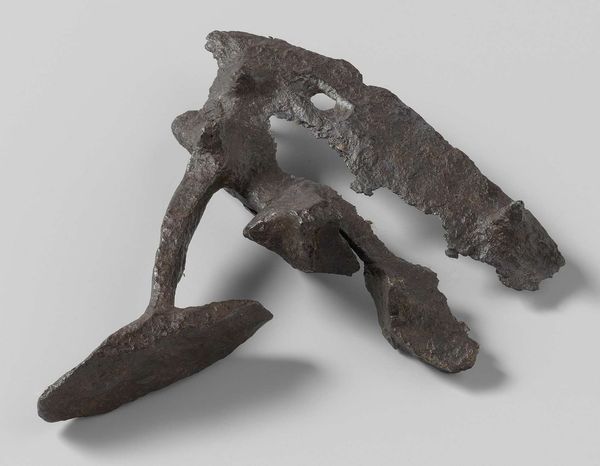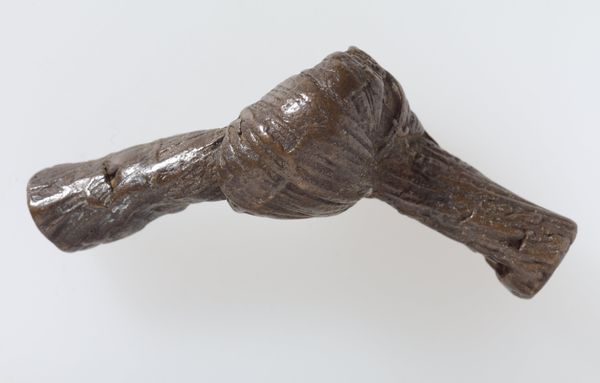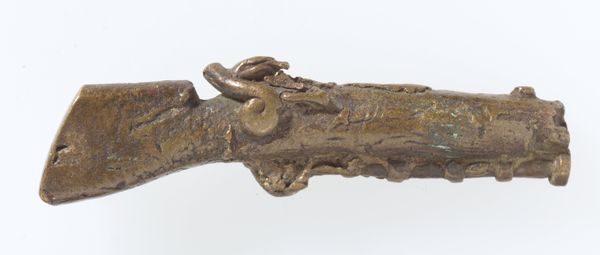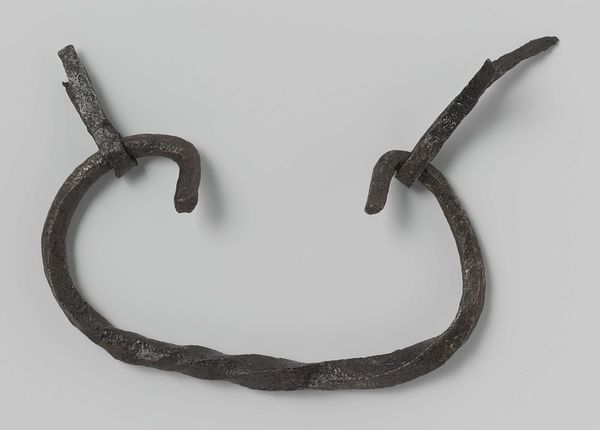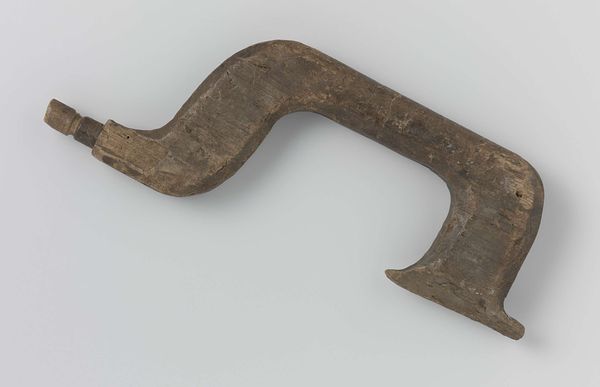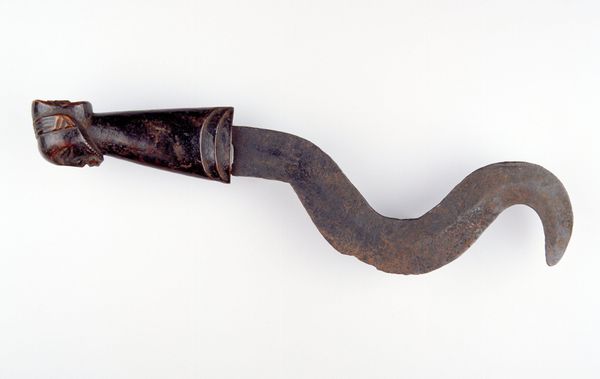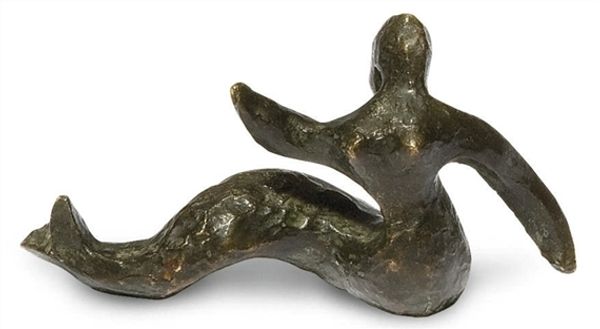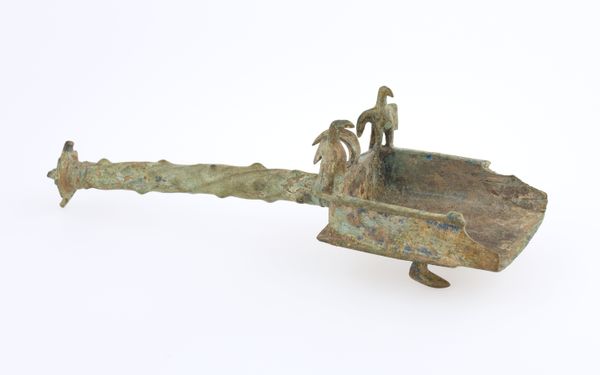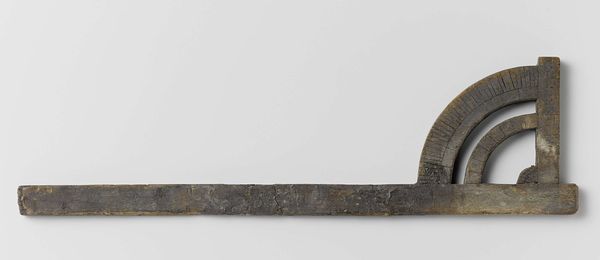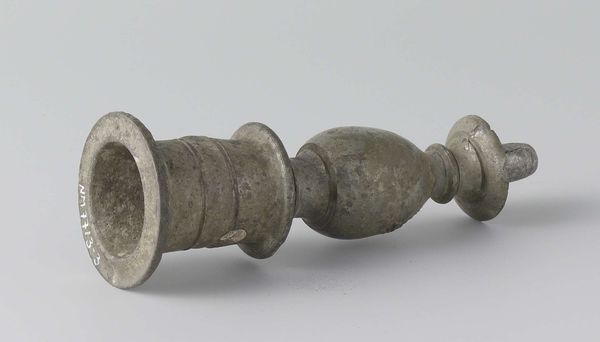![Goldweight [Crab Claw] by Akan](/_next/image?url=https%3A%2F%2Fd2w8kbdekdi1gv.cloudfront.net%2FeyJidWNrZXQiOiAiYXJ0ZXJhLWltYWdlcy1idWNrZXQiLCAia2V5IjogImFydHdvcmtzLzg2YzE5Mjk5LTAxYjAtNDA5My1hODViLTU0YjFlNjc5ODVmZi84NmMxOTI5OS0wMWIwLTQwOTMtYTg1Yi01NGIxZTY3OTg1ZmZfZnVsbC5qcGciLCAiZWRpdHMiOiB7InJlc2l6ZSI6IHsid2lkdGgiOiAxOTIwLCAiaGVpZ2h0IjogMTkyMCwgImZpdCI6ICJpbnNpZGUifX19&w=3840&q=75)
brass, sculpture
#
african-art
#
brass
#
sculpture
#
form
#
sculpture
Dimensions: 2 x 1 in. (5.08 x 2.54 cm)
Copyright: Public Domain
Editor: This petite brass sculpture, "Goldweight [Crab Claw]," is attributed to the Akan people, likely crafted in the 19th or 20th century. It's currently held at the Minneapolis Institute of Art. It has such a quiet presence... what symbolic meanings might be hiding beneath this shell? Curator: This abstract, almost biomorphic form carries the weight of a sophisticated and codified culture. Can you discern any geometric relationships that might carry symbolic weight? Editor: Well, it’s interesting that you ask… The claw has three segments. And I’m drawn to the tension between its organic form and the obviously intentional geometric shapes in its construction. Curator: The crab, as an image, resonates across many cultures. The three segments of the claw can symbolize cyclical changes or transitions. The Akan culture, where this originated, placed immense importance on proverbs; thus, goldweights visually encapsulated them. Are you familiar with any proverbs related to crabs or claws that might lend meaning here? Editor: Hmmm, I know claws represent protection and holding on tight… almost a kind of stubbornness. Curator: Indeed. The form's symbolic resonance comes alive when we remember its primary function: to measure gold dust. It’s tempting to see this crab claw as more than a unit of measure, isn't it? Holding fast to wealth and good fortune! Editor: That’s fascinating! So the crab's tenacity could be a visual reminder of careful transactions, and the pursuit of prosperity. I'll never look at a weight the same way. Curator: Exactly. Every choice from the material to its implied symbolism carries cultural DNA, revealing volumes about shared history.
Comments
No comments
Be the first to comment and join the conversation on the ultimate creative platform.

